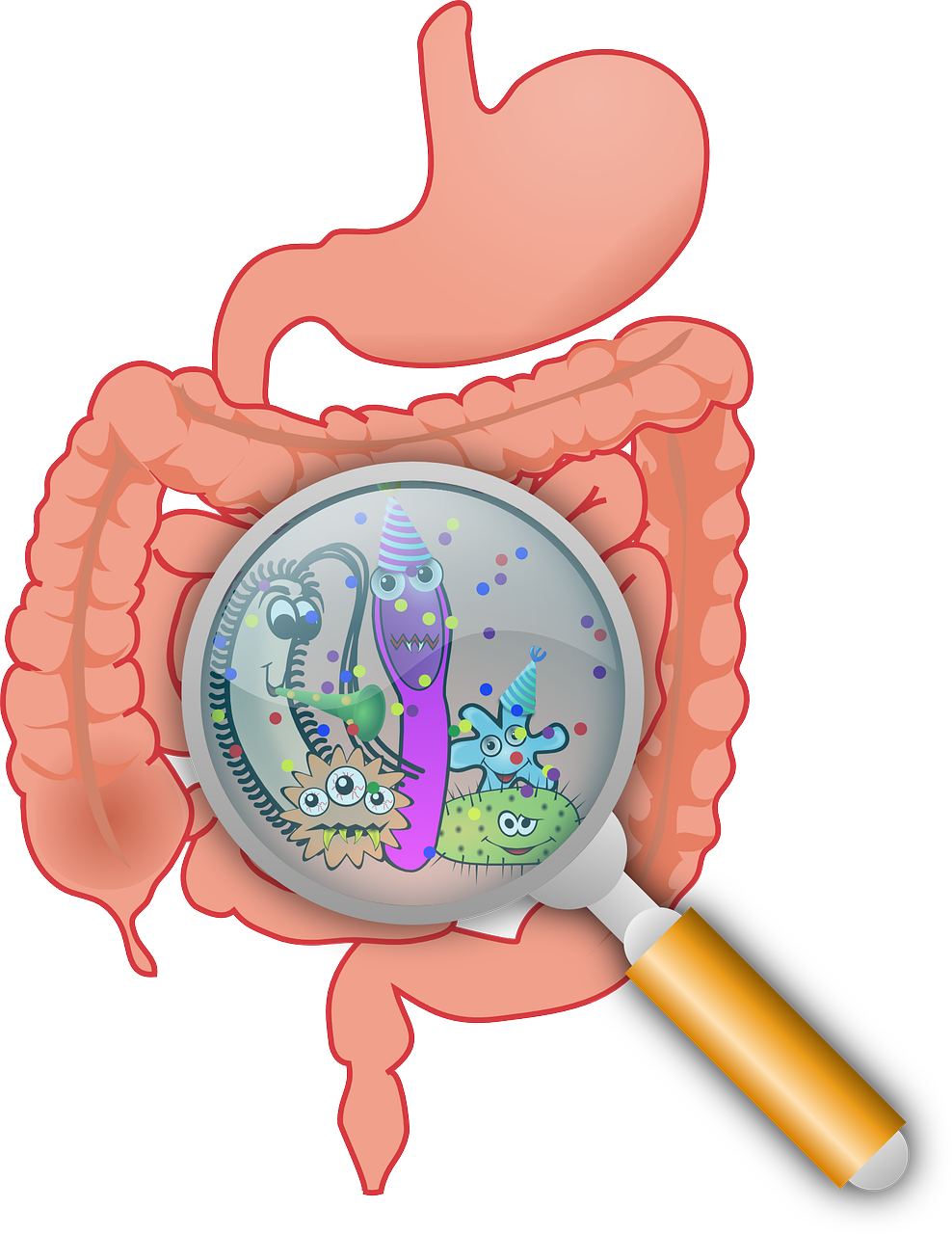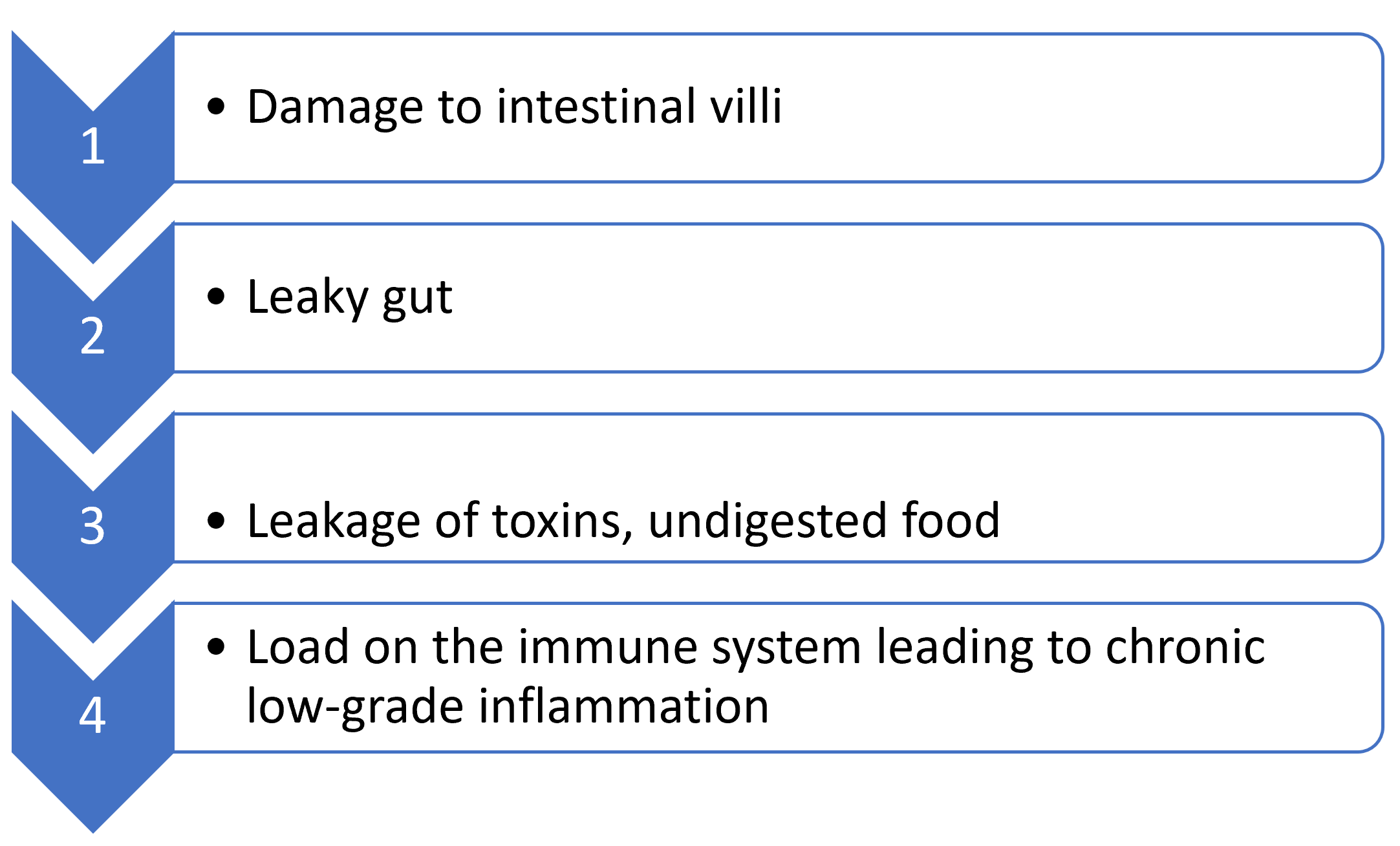The Mystery of the Human Gut Microbiome
The human gut microbiome is uncharted territory with a lot of promising potentials. Let's discover the secrets behind this wondrous flora residing in our gut
This article was published in Nisargopachar. Bilingual magazine by NIN, Pune in Aug 2021 issue.
Humans are Superorganisms
Let’s start at the very beginning, the birth of the planets. The first and most successful organisms on the planet are microbes. They are the most numerous, diverse and ubiquitous species. They have evolved and adapted to live in the most extreme conditions from acid mines to extreme pressures under the ocean to incredible levels of heat and chemical exposure.
We, humans, have co-evolved in this microbial soup. So, it is not surprising that they live IN and ON us. In fact, there are more microbial cells in the human body than the number of human cells!
And therefore, human is not just an organism. A human is a superorganism encompassing millions of diverse microbial colonies.
Among these, the average human has around 100 trillion microbes in our guts. These colonies of micro-organisms are also known as our gut microbiome or gut flora. It contains a diverse ecosystem including bacteria, viruses, yeasts and other microbes.
Until recently, most people thought of bacteria—or ‘germs’—like enemies that needed to be killed, but as scientists discover more and more about our gut flora, we’re slowly realizing how important it is to look after it.
We know that our microbiome contributes to our health by taking vitamins and fighting infections. But with more scientific breakthroughs, we are discovering more of their functions that were previously unknown. We are starting to realize that a majority of their functions still may be unknown.
These micro-organisms have traditionally been broadly classified as “good gut bacteria” and “bad gut bacteria”.
The Good Bacteria:
1. Bifidobacteria: various strains of this help regulate levels of other bacteria in the gut, modulate immune responses to invading pathogens, prevent tumour formation and produce vitamins.
2. Escherichia coli: Several types of E.coli inhabit the human gut. They are involved in the production of vitamin K2 and help to keep bad bacteria in check.
3. Lactobacilli: beneficial varieties produce vitamins and nutrients, boost immunity and protect against carcinogens.
The Bad Bacteria:
1. Campylobacter: C.jejuni and C.coli are the strains most commonly associated with human disease. Infection usually occurs through the ingestion of contaminated food.
2. Enterococcus faecalis: it is a common cause of post-surgical infections.
3. Clostridium difficile: It becomes most harmful following a course of antibiotics when it is able to proliferate.
Let’s Understand the Gut Microbiome
Microbes colonize the whole of the human digestive tract, not just the gut. They differ at different sites along the digestive tract. But they are most numerous and diverse in the distal part of the gut. Over 10 million microbial genes are found in the distal gut. These genes are actively expressed by the microbes. We rely on this genetic expression for digesting dietary components, metabolizing drugs and even influencing our immune response. Microbial genes actually form a part of human physiology.
So, how do we develop this diverse ecosystem of the gut microbiome? Scientists have found that we are actually born with a very simple gut microbiome, which then evolves over the human lifespan. This process begins even during very early fetal life.
Factors like maternal diet during pregnancy can influence the type of microbes that evolve in the gut. Even the method of birth can affect microbial diversity. Babies that are delivered through the vaginal tract tend to inherit lactobacillus species from their mothers while babies delivered through caesarean section tend to inherit more species of staphylococcus and streptococcus.
Subsequently, the single most influential factor for the diversity of the gut microbiome is DIET. The diet can rapidly and reproducibly alter the gut microbiome. For example, a plant-based and fibre-rich diet tend to increase microbial diversity and activity. On the other hand, an animal-based diet not only changes the diversity of the gut microbiome but also changes its functions. A predominantly animal-based diet was found to lower the concentration of short-chain fatty acid production in the gut.
Short-chain fatty acids are a product of the bacterial fermentation of plant-based fibre. These molecules are a source of energy for the cells that line the gut. They also have anti-inflammatory properties. Therefore, they promote health in the human system.
A lack of these fatty acids can trigger chronic inflammation, leading to a variety of metabolic disorders.
Based on this, we can conclude that anything that disrupts the balance of microbes in our gut has the potential to cause disease.

Altered Microbiome: The Source of all Miseries
Traditionally in naturopathy, we have always believed that “constipation is the mother of all diseases.” Modern science is now providing scientific evidence to support this belief.
The gut microbiome has the potential to influence other remote organs and their functions in the human body.
Numerous mouse studies have shown that the introduction of the gut microbiome from diseased humans into healthy mice promoted the development of those diseases in the mice. This is true for a variety of conditions like obesity, autism spectrum disorder, migraine etc…
The gut microbial diversity has been found to interact with the gut-brain axis.
The brain can influence the gut microbiome:
- The normal microbial ecosystem is affected by stress-induced changes in the gastrointestinal system.
- Stress-induced hormones from the brain can affect epithelial function, immune response and even mucin production.
The gut microbiome can influence brain and behaviour:
- Gut microbes can activate neural afferent circuits in the brain.
- They can activate a mucosal immune response.
- They are also involved in the production of metabolites that directly influence the CNS.
The Concept of Leaky Gut
A variety of genetic and environmental factors may be responsible for inducing an alteration in the diversity of the gut microbiome. This alteration is called dysbiosis. It involves the overgrowth of pathogenic bacteria and the inhibition of protective bacteria.
This may lead to immune activation and release of pro-inflammatory cytokines which may damage the intestinal villi. Damage to villi tremendously reduces the surface area for absorption of nutrients. It also may compromise intestinal tight junctions, therefore allowing the leak of toxins into the bloodstream.

The Solution
Research shows that our gut bacteria are very responsive to what we eat and bacterial communities begin shifting almost as soon as we change our diets.
The fundamental diet requirements for influencing bacterial growth include:
Pre-Biotics:
Prebiotics are a source of food for your gut's healthy bacteria. They are the carbohydrate fibers your body can't digest. So, they go to your lower digestive tract, where they act like food to help the healthy bacteria grow. They act as substrates for gut microbial proliferation.
Pro-Biotics:
Probiotics are live microorganisms that are intended to have health benefits when consumed or applied to the body. The most common are bacteria that belong to groups called Lactobacillus and Bifidobacterium. Other bacteria may also be used as probiotics, and so may yeasts such as Saccharomyces boulardii.
Post-Biotics:
The induction of non-viable bacteria into the gut.
Although this is not the case for all bacteria and health benefits, non-viable bacteria often have been shown to have similar effectiveness as viable bacteria counterparts (pro-biotics). With the added longer shelf-life and easier storage that favours both the technology and stability, there is now increased interest in these bacteria being included in consumer products.
The Five R Approach:
Adopt the 5R approach to restore gut functions.
1. Remove:
Remove Harmful foods:
- Foods that you may be sensitive, intolerant, or allergic to
- Processed foods
- Medicines or drugs, chemicals, toxins and environmental stressors
- Inflammatory foods like gluten, dairy, white sugar as well as food additives and preservatives
Remove Stress:
- Adopt stress-management techniques such as meditation, pranayama and other yogic techniques.
- Use effective techniques of hydrotherapy, mud therapy, massage and aromatherapy for combating stress
2. Restore:
Restore the body’s capability to adequately and efficiently carry out digestion, absorption and metabolism.
For this purpose, it is necessary to detoxify the system and restart the body clock. The best way to achieve this is by fasting.
A short fast of about 5-7 days helps in restoring the epithelium lining the gut. It also resets the peristaltic movement.
3. Reinoculate:
The goal then is to reinoculate the gut with good bacteria. Regularly include prebiotics, probiotics and fermented foods in the diet to achieve a more desirable balance to the intestinal microbiome.
4. Repair:
We must then begin to repair the damage of the GI mucosa, otherwise known as the gut lining with well-researched nutrient support.
Micronutrients such as zinc, quercetin, B complex and magnesium are known to possess wound healing properties.
Antioxidants found in phytonutrients and other plant-based foods help to reduce the burden of oxidative stress.
Anti-inflammatories such as curcumin, omega-3, piperine and many more nutrients can help to heal the chronic inflammation and regenerate the gut.
5. Rebalance:
Last, but definitely not least is to rebalance lifestyle factors. It is important to make permanent lifestyle changes to prevent the recurrence of dysbiosis.
These include:
- Improving food habits
- Drinking adequate water
- Scheduling relaxation and reducing stress
- Regular practice of yoga including asanas, pranayama, kriyas etc…
- Spending a few minutes every day dedicated to spiritual activities such as prayer, reading, satsang etc…
- Getting at least 7-8 hours of good quality sleep every night
Conclusion
The diverse world of microbes in the human gut is still a mystery to us. The latest advancements in science have only begun exploring the unknown. What we know about this wonderful world of bacteria is still only the tip of the iceberg.
However, with more scientific breakthroughs we are beginning to realise that traditional naturopathy has always advocated these healthy practices. Modern science only strengthens the evidence and re-enforces naturopathic beliefs.
